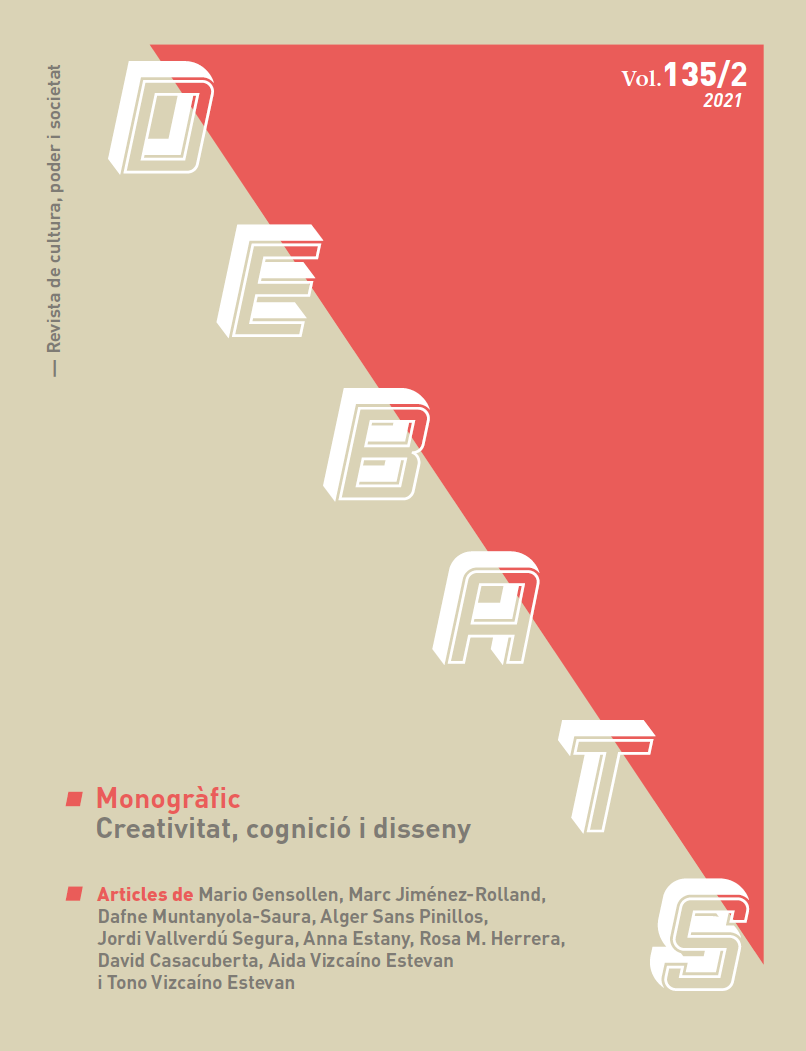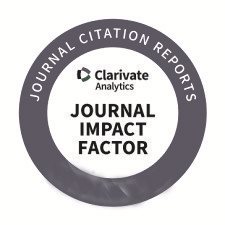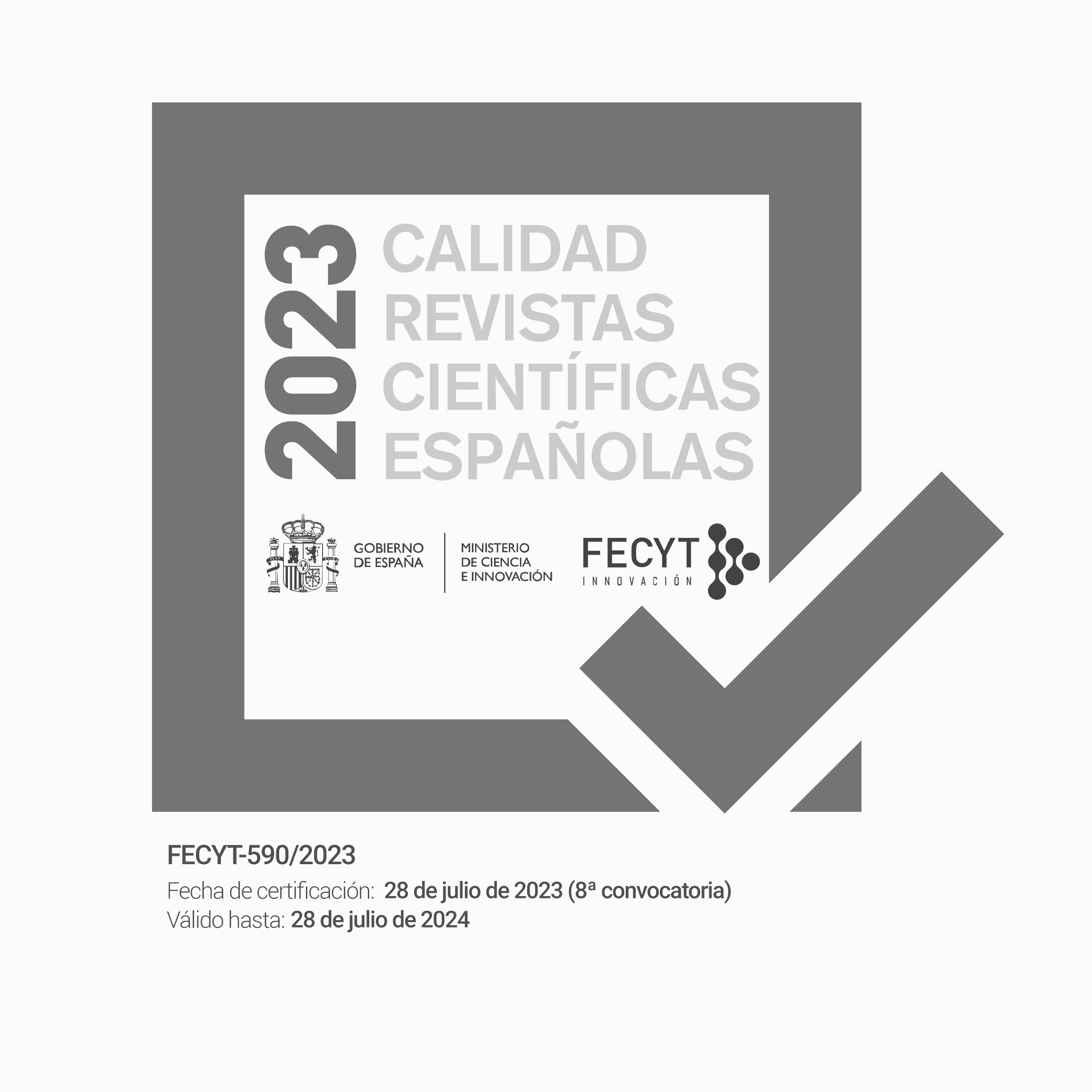Enacció, imaginació i comprensió sobtada
Descàrregues
Referències
Alač, M. i Hutchins, E. (2004). I see what you are saying: Action as cognition in fMRI brain mapping practice. Journal
of Cognition and Culture, 4(3), 629-661.
Bruner, J., Olver, R. i Greenfield, P., (ed.) (1966). Studies in cognitive growth: A collaboration at the Center for Cognitive
Studies. Nova York: John Wiley and Sons.
Churchland, P. S., Ramachandran, V. S. i Sejnowski, T. J. (1994). A critique of pure vision. En Koch, C. i Davis, J
(ed.), Large-scale neuronal theories of the brain, (p. 23–60). Cambridge, MA: MIT Press.
Clark, A. (2001). Mindware: An introduction to the philosophy of cognitive science. Oxford: Oxford University Press.
Clark, A. (2008). Supersizing the mind: Embodiment, action, and cognitive extension. Oxford: Oxford University Press.
Cole, M. i Griffin, M. (1980). Cultural amplifiers reconsidered. En Olson, D. (ed.), The social foundations of language
and thought: Essays in honor of Jerome Bruner (p. 343–364). Nova York: Norton.
Duncker, K. (1945). On problem solving. Psychological Monographs, 58(5), 1-270.
Enfield, N. (2006). Social consequences of common ground. En Enfield, N. J. i Levinson, S. C. (ed.), Roots of human
sociality: Culture, cognition and interaction (p. 399-430). Oxford: Berg Publishers.
Engel, A.K. (2010). Directive Minds: How dynamics shape cognition. En Stewart, J., Gappene, O. i DiPaolo, E. (ed.),
Enaction. Towards a New Paradigm in Cognitive Science. Nova York: Bradford Books.
Gentner, D. i Grudin, J. (1985). The evolution of mental metaphors in psychology: A 90-year retrospective. American
Psychologist, 40(2), 181-192.
Gibbs, R. (2006). Embodiment in cognitive science. Nova York: Cambridge University Press.
Glucksberg, S. (1964). Functional fixedness: Problem solution as a function of observing responses. Psychonomic
Science, 1, 117-118.
Goldin-Meadow, S. (2006). Meeting other minds through gesture: How children use their hands to reinvent language
and distribute cognition. En Enfield, N. J. i Levinson, S. C. (ed.), Roots of human sociality: Culture, cognition and
interaction (p. 353-373). Oxford: Berg Publishers.
Goodwin, C. (1994). Professional vision. American Anthropologist, 96(3), 606-633.
Halbwachs, M. (1925). Les cadres sociaux de la memoire. París: Albin Michel.
Havelange, V., Lenay, C. i Stewart, J. (2003). Les representations: memoire externe et objets techniques. Intellectica,
, 115-131.
Holldobler, B. i Wilson, E. O. (2009). The superorganism: The beauty, elegance, and strangeness of insect societies. Nova
York: Norton.
Hutchins, E. (1995a). Cognition in the wild. Cambridge, MA: MIT Press.
Hutchins, E. (1995b). How a cockpit remembers its speeds. Cognitive Science, 19, 265-288.
Hutchins, E. (2000). The cognitive consequences of patterns of information flow. Intellectica, 1(30), 53-74.
Hutchins, E. (2005). Material anchors for conceptual blends. Journal of Pragmatics, 37, 1555-1577.
Hutchins, E. (2006). The distributed cognition perspective on human interaction. En Enfield, N. J. i Levinson, S. C.
(ed.), Roots of human sociality: Culture, cognition and interaction (p. 375-398). Oxford: Berg Publishers.
Hutchins, E. i Johnson, C. (2009). Modeling the emergence of language as an embodied collective cognitive activity.
Topics in Cognitive Science, 1, 523-546.
Ingold, T. (2000). The perception of the environment: Essays in livelihood, dwelling, and skill. Oxon, RU: Routledge.
Lakoff, G. i Núñez, R. (2000). Where mathematics comes from: How the embodied mind brings mathematics into being.
Nova York: Basic Books.
Maturana, H. i Varela, F. (1987). The tree of knowledge: The biological roots of human understanding. Boston: Shambhala.
McNeill, D. (2005). Gesture and thought. Chicago: University of Chicago Press.
Murphy, K. (2004). Imagination as joint activity: The case of architectural interaction. Mind, Culture, and Activity,
(4), 267-278.
Myers, N. (2008). Molecular embodiments and the body-work of modeling in protein crystallography. Social Studies
of Science, 38(2), 163-199.
Noë. A. (2004). Action in perception. Cambridge, MA, MIT Press.
Norman, D. (1994). Things that make us smart: Defending human attributes in the age of the machine. Boston, Addison-
Wesley.
Núñez, R. (2005). Creating mathematical infinities: The beauty of transfinite cardinals. Journal of Pragmatics, 37,
-1741.
Núñez, R. i Sweetser, E. (2006). With the future behind them: Convergent evidence from Aymara language and
gesture in the crosslinguistic comparison of spatial construals of time. Cognitive Science, 30, 401-450.
O’Regan, J. K. i Noë, A. (2001). A sensorimotor approach to vision and visual consciousness. Behavioral and Brain
Sciences, 224(5), 939-973.
Roberts, J. (1964). The self-management of cultures. En W. Goodenough (ed.), Explorations in cultural anthropology:
Essays in honor of George Peter Murdock (p. 433–454). Nova York, McGraw-Hill.
Seeley, T. i Levien, R. (1987). A colony of mind: the beehive as thinking machine. Sciences, 27(4), 38-43.
Smith, L. (2005). Action alters shape categories. Cognitive Science, 29(4), 665–679.
Spivey, M. (2007). The continuity of mind. Oxford, Oxford University Press.
Sunstein, C. (2006). Infotopia: How many minds produce knowledge. Oxford, Oxford University Press.
Surowiecki, J. (2004). The wisdom of crowds. Nova York, Doubleday.
Turner, J. S. (2000). The extended organism: The physiology of animal-built structures. Cambridge, MA, Harvard
University Press.
Vygotsky, L. S. (1986). Thought and language. Cambridge, MA, MIT Press.
Watson, J. (1968). The double helix: A personal account of the discovery of the structure of DNA. Nova York, Simon and
Schuster.
Wilson, M. (2002). Six views of embodied cognition. Psychonomic Bulletin & Review, 9(4), 625–636.
Descàrregues
Publicades
Com citar
Número
Secció
Llicència
Sense perjudici del que disposa l'article 52 de la Llei 22/1987 d'11 de novembre de Propietat Intel·lectual, BOE del 17 de novembre de 1987, i conforme a aquest, els/les autors o autores cedeix/en a títol gratuït els seus drets d'edició, publicació, distribució i venda sobre l'article, per tal que siga publicat a Debats. Revista sobre cultura, poder i societat.
Debats. Revista de cultura, poder i societat es publica sota el sistema de llicències Creative Commons segons la modalitat “Reconeixement – NoComercial (by-nc): Es permet la generació d’obres derivades sempre que no se’n faça un ús comercial. Tampoc no es pot fer servir l’obra original amb finalitats comercials”.
Així, quan l’autor/a envia la seva col·laboració, accepta explícitament aquesta cessió de drets d’edició i de publicació. Igualment autoritza Debats. Revista de cultura, poder i societat la inclusió del seu treball en un fascicle de la revista perquè es puga distribuir i vendre.











